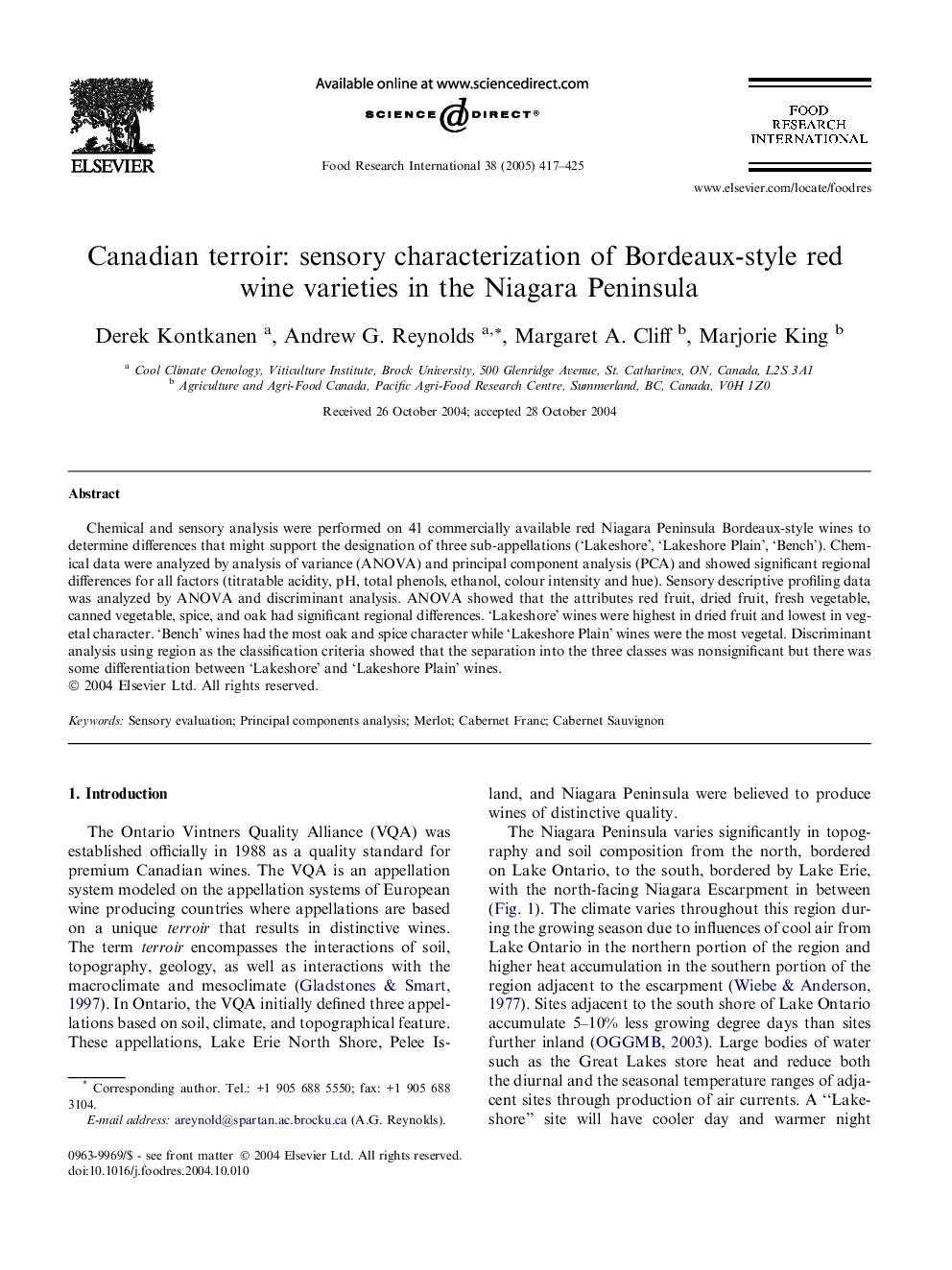| Article ID | Journal | Published Year | Pages | File Type |
|---|---|---|---|---|
| 9487709 | Food Research International | 2005 | 9 Pages |
Abstract
Chemical and sensory analysis were performed on 41 commercially available red Niagara Peninsula Bordeaux-style wines to determine differences that might support the designation of three sub-appellations ('Lakeshore', 'Lakeshore Plain', 'Bench'). Chemical data were analyzed by analysis of variance (ANOVA) and principal component analysis (PCA) and showed significant regional differences for all factors (titratable acidity, pH, total phenols, ethanol, colour intensity and hue). Sensory descriptive profiling data was analyzed by ANOVA and discriminant analysis. ANOVA showed that the attributes red fruit, dried fruit, fresh vegetable, canned vegetable, spice, and oak had significant regional differences. 'Lakeshore' wines were highest in dried fruit and lowest in vegetal character. 'Bench' wines had the most oak and spice character while 'Lakeshore Plain' wines were the most vegetal. Discriminant analysis using region as the classification criteria showed that the separation into the three classes was nonsignificant but there was some differentiation between 'Lakeshore' and 'Lakeshore Plain' wines.
Related Topics
Life Sciences
Agricultural and Biological Sciences
Food Science
Authors
Derek Kontkanen, Andrew G. Reynolds, Margaret A. Cliff, Marjorie King,
